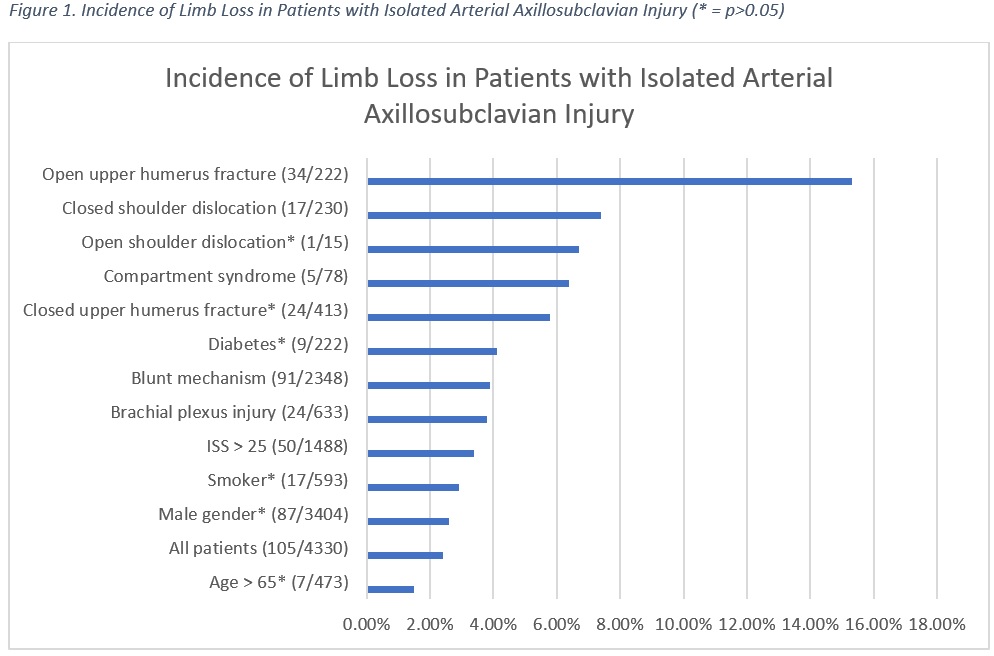Combined Venous Injury Increases Upper Extremity Limb Loss in Patients with Axillary or Subclavian Arterial Injury
Areg Grigorian, MD1, Samuel Eric Wilson, MD1, Christian de Virgilio, MD2, Nii-Kabu Kabutey, MD1, Roy M. Fujitani, MD1, Viktor Gabriel, MD1, Sebastian Schubl, MD1, Victor Joe, MD1, Jeffry Nahmias, MD1.
1University of California, Irvine, Orange, CA, USA, 2University of California, Los Angeles - Harbor-UCLA, Torrance, CA, USA.
OBJECTIVES: Axillosubclavian vessel injury (ASVI) is rare with most cases occurring after penetrating trauma. A prior 2002-2006 National Trauma Data Bank (NTDB) study demonstrated an overall limb loss rate of 2.9%, with no difference between isolated ASVI and combined arterial/venous ASVI. Given advances in vascular surgical technique, multidisciplinary approach, and the more widespread use of computed tomography angiography, we hypothesized the national rate of limb loss in patients with isolated ASVI has decreased over the past decade. In addition, we hypothesized that combined arterial/venous ASVI will have a higher rate of limb loss compared to isolated ASVI.
METHODS: A retrospective analysis of the NTDB was performed between 2007-2015. All patients > 18 years of age with ASVI were included and grouped by isolated arterial vs combined artery/vein injury. The primary outcome was limb loss. After a univariate logistic regression model identified significant covariates we performed a multivariate logistic regression for analysis.
RESULTS: Of the total 5,494,609 trauma admissions there were 5,205 patients with ASVI (< 0.1%). Of these, 4330 (83.2%) had isolated arterial ASVI and 875 (16.8%) had combined artery/vein ASVI. The overall limb loss rate was 2.4%. Patients with isolated arterial ASVI were older (mean, 39.8 vs 33.2 years) and had a lower median injury severity score (18 vs 20). Patients with combined artery/vein ASVI had a higher prevalence of a penetrating mechanism of injury (25.9% vs 13.9%), brachial plexus injury (21.5% vs 14.6%), open upper humerus fracture (7.3% vs 5.1%), limb loss (5.5% vs 2.4%) and mortality (32.9% vs 16.3%). After adjusting for covariates, independent risk factors for limb loss include a concomitant artery/vein ASVI (adjusted odds ratio [OR]=4.70, 95% confidence intervals [CI]=2.98-7.39, p<0.001), blunt mechanism (OR=39.51, 95% CI 5.39-289.58, p<0.001) and open upper humerus fracture (OR=9.22, 95% CI 5.82-14.61, p<0.001).
CONCLUSIONS: The national rate of limb loss in trauma patients with isolated ASVI has decreased by 17%. A combined artery/vein ASVI is an independent risk factor for limb loss as well as an open upper humerus fracture.

Back to 2018 ePosters




